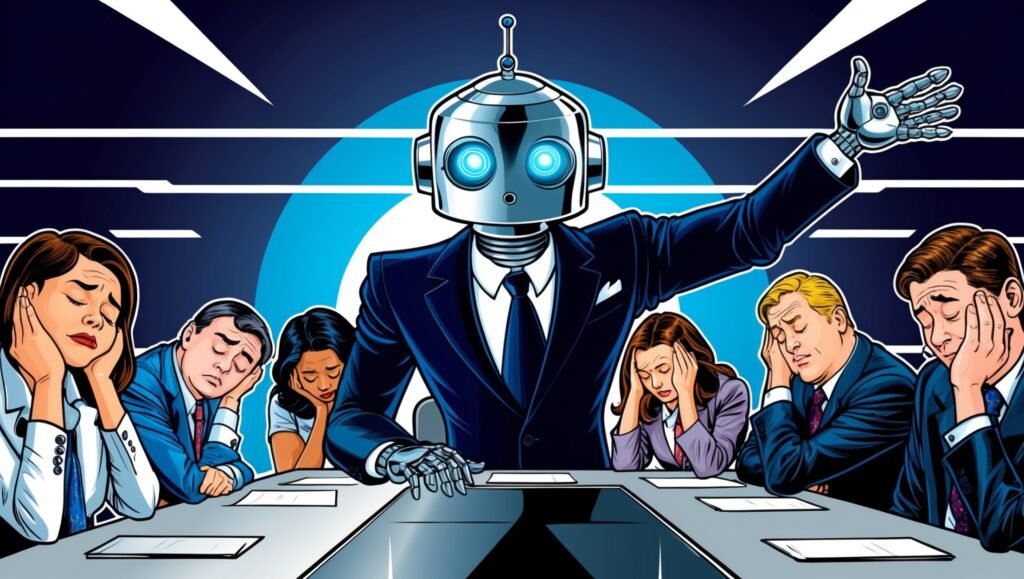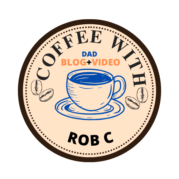
Look, I get it. You’ve probably read about 47 articles on building high-performance teams, and they all sound like they were written by a corporate robot who’s never actually managed real humans. “Establish clear communication channels” – wow, groundbreaking stuff there. But here’s the thing: building a kick-butt team doesn’t have to be as complicated as your aunt’s secret lasagna recipe. And unlike most of those “ultimate guides” gathering digital dust on the internet, this one’s actually going to be, you know, useful (and hopefully entertaining enough to keep you awake).
TL;DR (Because We All Love a Good Shortcut)
- Trust isn’t built through trust falls (shocking, I know)
- Communication isn’t just about Slack emojis (though they help)
- Accountability doesn’t mean turning into a micromanaging monster
- Real teams are messy, and that’s perfectly okay
Why Most Team-Building Advice Sucks (And What We’re Doing Differently)

Let’s be honest: most team-building advice reads like it was written by someone whose only management experience is organizing their sock drawer. You know the type – they throw around terms like “synergy” and “cross-functional collaboration” like they’re getting paid by the buzzword.
But here’s what nobody tells you: building a high-performance team is less like assembling IKEA furniture (though sometimes equally frustrating) and more like creating a killer playlist. You need the right mix of elements, and sometimes the best combinations are surprisingly unexpected.
The Real Deal: What Actually Makes Teams Work
1. Trust: Beyond the Cheesy Trust Falls
Remember that time Karen from accounting suggested a trust-fall exercise, and everyone mysteriously developed back problems? Yeah, real trust isn’t built by falling backward into your coworkers’ arms (though it might make for some hilarious office stories).
Case Study: Pixar’s Brain Trust
Take Pixar, for example. They’ve created some of the most successful animated films ever, and their secret sauce? The Brain Trust – a group where everyone can speak freely without fear of being sent to animation jail. When working on “Toy Story 2,” they completely scrapped months of work because it wasn’t good enough. That takes trust, folks.
What made it work:
- No hierarchy in the room (even if you’re wearing fancy pants outside)
- Feedback focused on the project, not the person
- Complete honesty, but with constructive intent
2. Communication: More Than Just Slack Channels and Endless Meetings
If you think adding another Zoom meeting to the calendar will solve your communication problems, I’ve got a bridge to sell you. Real communication is less about the tools and more about creating an environment where people aren’t afraid to say, “I have no idea what’s going on right now.”
Case Study: Spotify’s Squad Model
Spotify didn’t become the king of streaming by accident. Their squad model is basically the Beatles of organizational structures. Small, autonomous teams work on specific features, and they communicate like people, not robots.
Their secret sauce:
- Small, cross-functional teams (no more “waiting for legal to approve”)
- Regular, meaningful sync-ups (not just status updates)
- Clear goals that everyone actually understands
3. Accountability: Not Just a Fancy Word for “Who Do We Blame?”
Accountability in high-performance teams isn’t about finding someone to throw under the bus when things go wrong. It’s about creating an environment where people actually want to own their work (shocking concept, I know).
Case Study: Google’s Project Aristotle
Google, being Google, tried to crack the code of perfect teams using data (because of course they did). What they found was surprising: psychological safety was the key factor. Teams where people felt safe to take risks and be vulnerable performed better.
How they made it work:
- Clear expectations (but not micromanagement)
- Regular feedback (but not the soul-crushing kind)
- Celebration of both successes and failures (yes, failures)
The Not-So-Secret Ingredients of High-Performance Teams

1. Diverse Perspectives (Because Clone Armies Are So Last Century)
Remember that time you had a team where everyone thought exactly alike? Neither do I, because that team probably failed spectacularly. High-performance teams need different perspectives like a pizza needs toppings – sure, you could just have cheese, but where’s the fun in that?
What Actually Works:
- Hiring people who think differently than you
- Creating space for disagreement (constructive, not “The Office” season 2 kind)
- Leveraging different strengths (even if some of those strengths are “can make amazing coffee”)
2. Clear Goals (But Not the “We Want to Be the Best” Kind)
Having clear goals is like having a good GPS – it helps you know where you’re going and when you’ve gone horrifically off track. But “being the best” is about as useful a goal as “making lots of money” is a business plan.
Real-World Example: Microsoft’s Comeback
When Satya Nadella took over Microsoft, he didn’t just say, “Let’s beat Apple!” (though I’m sure he thought it). Instead, he set clear, specific goals around cloud computing and digital transformation. The result? Microsoft went from “that company that makes Windows” to a cloud computing powerhouse.
Key elements:
- Specific, measurable goals
- Regular check-ins and adjustments
- Transparency about progress (or lack thereof)
3. Emotional Intelligence (Yes, Feelings Matter, Deal With It)
If you think emotional intelligence is just HR buzzword bingo, you’re probably the reason your team needs more emotional intelligence training. High-performance teams understand that feelings aren’t just for therapy sessions.
Case Study: Netflix’s Radical Candor
Netflix’s culture of candor isn’t about being brutally honest (emphasis on brutal). It’s about creating an environment where feedback is direct but compassionate, and where emotional intelligence is as valued as technical skills.
What they get right:
- Direct feedback with empathy
- Recognition of emotional impact
- Support for personal growth
Common Team-Building Mistakes (And How to Not Look Like an Idiot)

1. The “One-Size-Fits-All” Trap
You know what they say about assuming? It makes a… well, you know the rest. Trying to apply the same team-building approach to every group is like using the same pickup line at every bar – it might work once, but mostly you’ll just look foolish.
2. The “Force Fun” Fallacy
Mandatory fun activities are about as effective as mandatory happiness. You can’t force team bonding any more than you can force your cat to love you (trust me, I’ve tried).
3. The “Copy-Paste Success” Syndrome
Just because Google has nap pods doesn’t mean your team needs them. Success strategies aren’t like Instagram filters – you can’t just copy and paste them onto your team and expect magic.
Building Your Own High-Performance Team: A Reality-Based Approach
Step 1: Assess Where You Actually Are
Before you start implementing fancy new systems, take a honest look at your current team. And no, “we’re doing great except for everything” doesn’t count as an assessment.
Quick Assessment Questions:
- Can team members disagree without starting a civil war?
- Does anyone actually read the meeting minutes?
- When was the last time someone admitted to making a mistake?
Step 2: Create Your Game Plan
Remember: Rome wasn’t built in a day, and your high-performance team won’t be either (unless you have access to time travel, in which case, we should talk).
Priority Actions:
- Define what “high-performance” means for your specific team
- Set realistic timelines (no, next week isn’t realistic)
- Get buy-in from team members (bribery with pizza is acceptable)
Step 3: Implementation (The Fun Part)
This is where the rubber meets the road, where the magic happens, where… okay, I’ll stop with the clichés. Here’s what you actually need to do:
- Start with small wins
- Celebrate progress (yes, even the tiny ones)
- Adjust as you go (because no plan survives contact with reality)
Maintaining High Performance (Without Burning Out)
The Sustainability Factor
High performance doesn’t mean running at 200% all the time. That’s not performance, that’s a recipe for burnout (and a lot of cranky team members).
Keys to Sustainable Performance:
- Regular breaks (no, bathroom breaks don’t count)
- Clear boundaries (email at 3 AM is not “dedication”)
- Work-life balance (yes, it actually exists)
The Evolution Game
High-performance teams aren’t static – they evolve. Like Pokemon, but with less fighting and more professional development.
Evolution Strategies:
- Regular skill updates
- Rotation of responsibilities
- Continuous learning opportunities
Measuring Success (Without Driving Everyone Crazy)
Metrics That Actually Matter
Stop measuring things just because they’re measurable. Nobody cares how many meetings you had this week if nothing got accomplished.
Meaningful Metrics:
- Project completion rates
- Team satisfaction scores
- Customer feedback
- Innovation metrics
The Human Factor
Remember: behind every metric is a human being (unless you’ve secretly replaced your team with AI, in which case, we need to have a different conversation).
Conclusion: Building Your Dream Team (For Real This Time)
Building a high-performance team isn’t rocket science (unless you’re actually building rockets, in which case, it kind of is). It’s about creating an environment where people can do their best work without losing their minds in the process.
Remember:
- Trust takes time
- Communication needs to be real
- Accountability isn’t about blame
- And sometimes, the best team-building happens when you’re not trying to build the team
Now go forth and build your team. And if all else fails, there’s always pizza. Pizza fixes everything.
